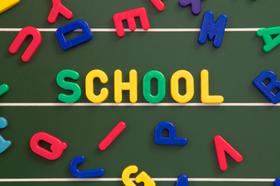Top Rankings
East Feliciana Parish School District ranks among the top 20% of public school district in Louisiana for:
Category
Attribute
Student Attention
Lowest student:teacher ratio (Top 1%)
For the 2025 school year, there are 3 public preschools serving 947 students in East Feliciana Parish School District. This district's average pre testing ranking is 5/10, which is in the bottom 50% of public pre schools in Louisiana.
Public Preschools in East Feliciana Parish School District have an average math proficiency score of 24% (versus the Louisiana public pre school average of 33%), and reading proficiency score of 36% (versus the 40% statewide average).
Minority enrollment is 59% of the student body (majority Black), which is less than the Louisiana public preschool average of 60% (majority Black).
Overview
This School District
This State (LA)
# Schools
6 Schools
659 Schools
# Students
1,743 Students
318,140 Students
# Teachers
140 Teachers
22,927 Teachers
Student : Teacher Ratio
12:1
12:1
Student By Grade
District Rank
East Feliciana Parish School District, which is ranked within the top 50% of all 177 school districts in Louisiana (based off of combined math and reading proficiency testing data) for the 2022-2023 school year.
The school district's graduation rate of 85% has increased from 80-84% over five school years.
Overall District Rank
#63 out of 187 school districts
(Top 50%)
(Top 50%)
Math Test Scores (% Proficient)
31%
34%
Reading/Language Arts Test Scores (% Proficient)
34%
42%
Science Test Scores (% Proficient)
19%
27%
Graduation Rate
85%
83%
Students by Ethnicity:
Diversity Score
0.54
0.66
% American Indian
n/a
1%
% Asian
n/a
1%
% Hispanic
3%
13%
% Black
57%
42%
% White
38%
39%
% Hawaiian
n/a
n/a
% Two or more races
2%
4%
All Ethnic Groups
District Revenue and Spending
The revenue/student of $14,308 in this school district is less than the state median of $15,176. The school district revenue/student has stayed relatively flat over four school years.
The school district's spending/student of $14,053 is less than the state median of $14,514. The school district spending/student has stayed relatively flat over four school years.
Total Revenue
$25 MM
$10,755 MM
Spending
$25 MM
$10,286 MM
Revenue / Student
$14,308
$15,176
Spending / Student
$14,053
$14,514
Best East Feliciana Parish School District Public Preschools (2025)
School
(Math and Reading Proficiency)
(Math and Reading Proficiency)
Location
Grades
Students
Rank: #11.
Slaughter Elementary School
(Math: 32% | Reading: 44%)
Rank:
Rank:
6/
Top 50%10
3170 Church Street
Slaughter, LA 70777
(225) 654-4527
Slaughter, LA 70777
(225) 654-4527
Grades: PK-6
| 489 students
Rank: #22.
Clinton Elementary School
(Math: 15-19% | Reading: 30-34%)
Rank:
Rank:
4/
Bottom 50%10
10701 Reiley Street
Clinton, LA 70722
(225) 683-8293
Clinton, LA 70722
(225) 683-8293
Grades: PK-6
| 192 students
Rank: #33.
Jackson Elementary School
(Math: 15-19% | Reading: 20-24%)
Rank:
Rank:
3/
Bottom 50%10
3505 Highway 10
Jackson, LA 70748
(225) 634-5933
Jackson, LA 70748
(225) 634-5933
Grades: PK-6
| 266 students
Recent Articles

The 15 Biggest Failures of the American Public Education System
The world is in a constant state of change and those who fail to adjust fall behind. Unfortunately, the American public education system has not kept up with the times and is currently facing a number of serious problems. Keep reading to learn about the biggest failures affecting the modern U.S. public education system as well as some of the trends that could spark change.

Florida Governor Calls for More Funding for State鈥檚 Public School System
Florida Governor Rick Scott has introduced a state budget for next year that pumps one billion more dollars into the public school system. We鈥檒l look at his reasons for the increase and the responses to the proposal.

Can Your Child鈥檚 School Meet the National Standards?
The article discusses the challenges public schools face in meeting national educational standards. It examines current performance trends, identifies key issues affecting student achievement, and explores potential solutions for improving academic outcomes across U.S. public schools.





